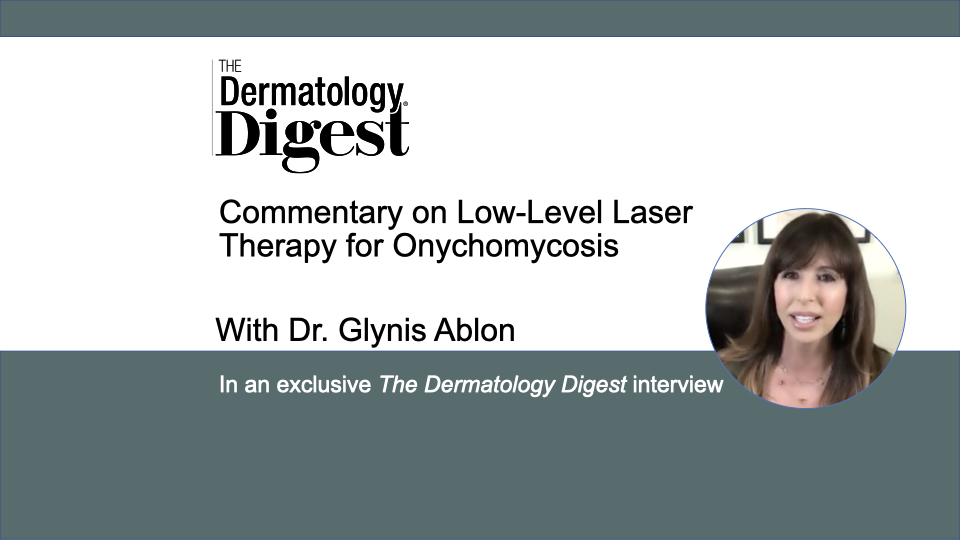Dr. Glynis Ablon discusses nail therapies for onychomycosis and explains how low level laser therapy has changed the way she manages the nail disorder.
According to Glynis Ablon, MD, FAAD, Ablon Skin Institute and Research Center, Manhattan Beach, Calif., recent studies show mixed success with oral and topical therapies.
“Oral therapy for nail fungus really is only about 37%, and with a cure rate of about 27%,” says Dr. Ablon. “Topicals have an lower percentage, so it’s… something hard to treat, and it’s very common and as we all get more ‘mature’ the risk of getting on onychomycosis is even higher.”
In 2016, a low level laser was developed for toenail fungus, says Dr. Ablon. It’s called Lunula Laser (Erchonia; Melbourne, Fla.).
Despite being available for more than 20 years on the market, Dr. Ablon calls this a recent innovation based on research published early this year.
“There was a recent publication specifically on this machine… in International Journal of Dermatology and Clinical Research, in January 2021, with a mycological cure of about 20% but a clinical cure of about 70% at the six month mark,” she says.
Lunula is a dual diode laser with 635 nm and 405 nm wavelengths. Dr. Ablon describes the laser treatment as one that creates a drug-like response in living tissue. Importantly, it’s pain free, she says.
“I love that machine. I am so happy with it… it’s low level light laser which means that there’s no heat involved, which means zero, pain, and people are always shocked now because of it. I will give my patients an instruction sheet on things to do to prevent [onychomycosis] from recurring but that laser really has changed my practice.”


